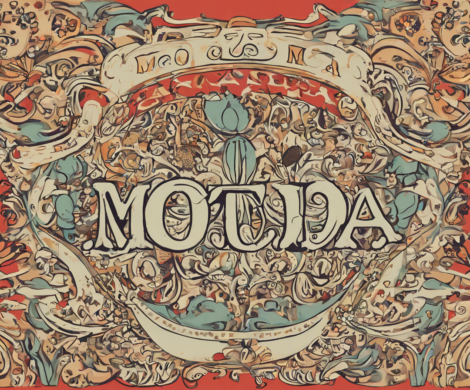Unveiling the World of the Angelic Masochist

Introduction
Among the diverse array of sexual orientations and preferences, one that often remains shrouded in mystery and intrigue is that of the angelic masochist. This unique niche within the realm of BDSM (Bondage, Discipline, Sadism, and Masochism) involves individuals who derive pleasure and fulfillment from pain, submission, and relinquishing control. In this comprehensive guide, we will delve into the world of the angelic masochist, exploring the intricacies of their desires, the dynamics of their relationships, and how they navigate the fine line between pleasure and pain.
Understanding Angelic Masochism
What is Angelic Masochism?
At the core of angelic masochism is the intertwining of pain and pleasure, where individuals find deep satisfaction and arousal in relinquishing control, experiencing physical discomfort, and submitting to a dominant partner. The term “angelic” in angelic masochist relates to the ethereal and transcendent nature of the experience for the individual, where the act of surrendering becomes a form of liberation and catharsis.
Psychological Aspects of Angelic Masochism
For many angelic masochists, the experience of pain serves as a gateway to altered states of consciousness and heightened sensations. The release of endorphins and adrenaline during BDSM activities can induce a natural high, leading to feelings of euphoria, serenity, and even spiritual transcendence. This psychological aspect of angelic masochism is often tied to the individual’s desire for escapism, self-discovery, and intimate connection with their partner.
Exploring the Dynamics of Angelic Masochist Relationships
Consent and Communication
Central to the practice of angelic masochism, like all forms of BDSM, is the emphasis on consent and communication. Before engaging in any activities, partners must establish clear boundaries, safe words, and a deep understanding of each other’s desires and limits. Trust is paramount in angelic masochist relationships, as both the submissive and dominant partners rely on one another to ensure a safe and fulfilling experience.
Power Dynamics
In angelic masochism, the power dynamics between partners play a crucial role in defining the boundaries of control and submission. The dominant partner assumes the role of the sadist, deriving pleasure from inflicting pain and orchestrating the scene, while the submissive partner embraces their role as the masochist, finding pleasure in surrendering and enduring the sensations inflicted upon them. This exchange of power is not about cruelty or harm but rather about mutual respect, trust, and the exploration of desires.
Safety and Risk Awareness
As with any form of BDSM, safety is a top priority in angelic masochist relationships. Both partners must be well-versed in risk-aware BDSM practices, including proper techniques for impact play, bondage, and other activities that may involve physical intensity. Regularly checking in with each other, monitoring physical and emotional well-being, and having appropriate safety implements on hand are essential components of a safe and enjoyable experience.
Exploring the Spiritual Dimension of Angelic Masochism
For some angelic masochists, the act of surrendering and experiencing pain transcends the physical realm and delves into the spiritual and emotional spheres. The sensations of pleasure and pain intertwine to create a unique form of ecstasy and enlightenment, where individuals feel a profound sense of connection, vulnerability, and release. Through the practice of angelic masochism, some individuals find healing, self-discovery, and a deeper understanding of their desires and boundaries.
Navigating the Taboos and Stigmas of Angelic Masochism
Despite the growing acceptance and visibility of BDSM in mainstream culture, angelic masochism still carries a certain stigma and taboo due to its emphasis on pain and submission. Many individuals may struggle with feelings of shame, guilt, or fear of judgment when exploring their angelic masochist desires. It is crucial for individuals in this community to find supportive and non-judgmental spaces where they can express themselves authentically, seek guidance, and connect with like-minded individuals.
Conclusion
The world of the angelic masochist is a complex and multifaceted realm where pleasure and pain intersect, power dynamics shift, and spiritual awakenings unfold. Through open communication, trust, and a deep understanding of one’s desires and boundaries, individuals engaged in angelic masochism can experience profound intimacy, growth, and fulfillment. By embracing the uniqueness of their desires and exploring the depths of their fantasies, angelic masochists pave the way for self-discovery, connection, and transformative experiences within the realm of BDSM.
FAQs
1. What distinguishes angelic masochism from other forms of BDSM?
Angelic masochism focuses on the spiritual and transcendent aspects of pain and submission, where individuals seek catharsis, enlightenment, and altered states of consciousness through BDSM activities.
2. Is angelic masochism always about pain and submission?
While pain and submission play a central role in angelic masochism, the experience varies for each individual. Some may focus more on the emotional and psychological aspects of surrender, while others may explore the physical sensations of pain and pleasure.
3. How can one safely explore angelic masochism?
Safety is paramount in angelic masochist relationships. Partners should prioritize open communication, establish clear boundaries and safe words, and continuously check in with each other to ensure a safe and consensual experience.
4. Can someone be both a sadist and a masochist in the context of angelic masochism?
Yes, some individuals may identify with both roles, known as switches, where they enjoy both inflicting pain and receiving it in different contexts or with different partners.
5. What are some common misconceptions about angelic masochism?
Common misconceptions about angelic masochism include associating it solely with trauma or psychological issues, viewing it as inherently abusive, or failing to recognize the consensual and empowering nature of BDSM dynamics.





